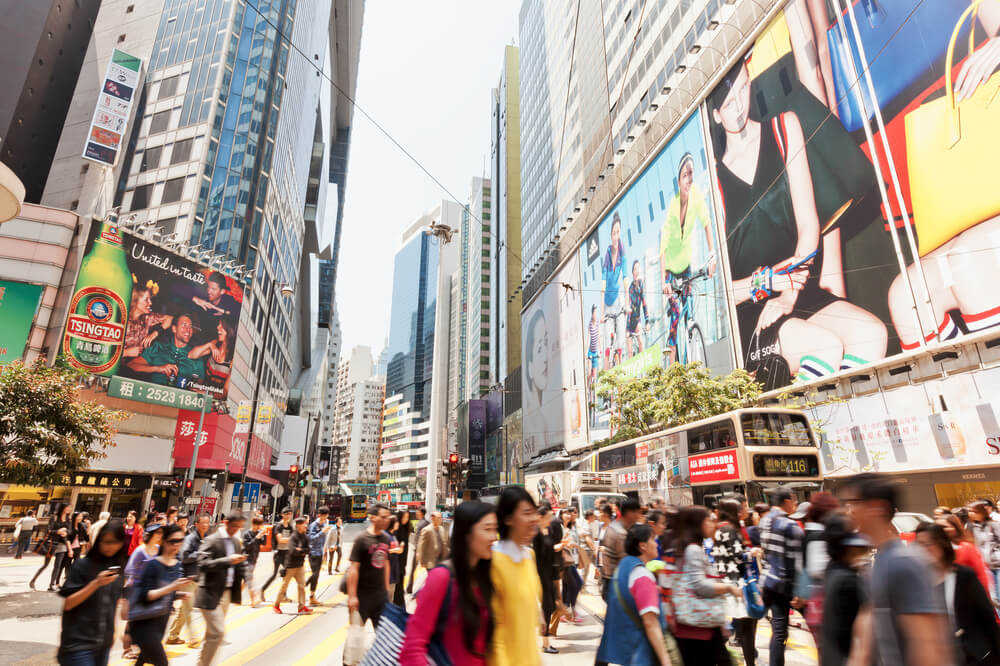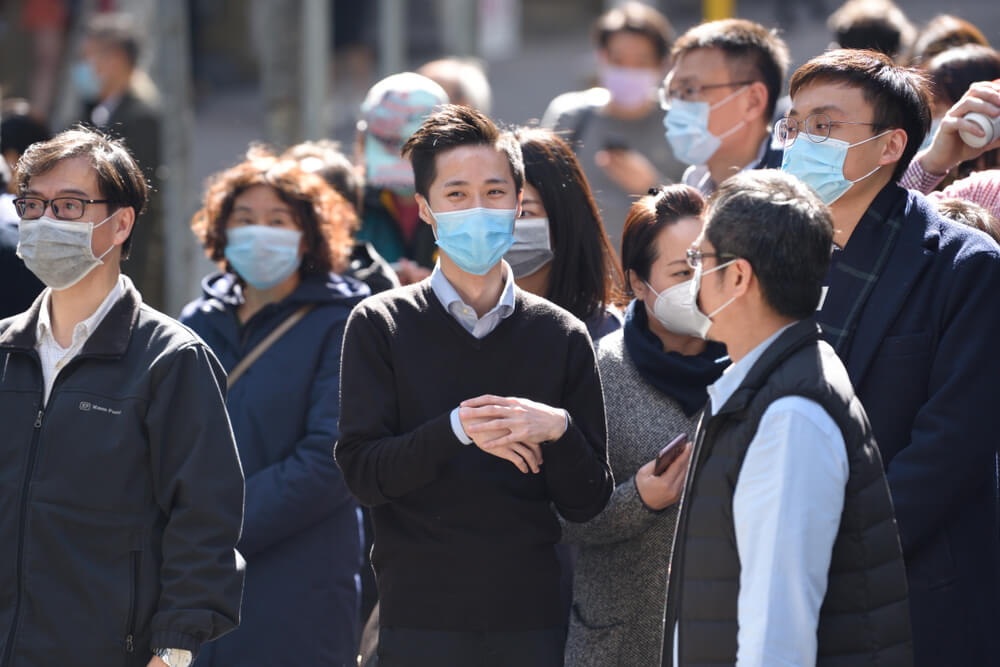Hong Kong’s commercial property market in turmoil
After months of violent protests and the ongoing US-China trade war, it seemed the situation could not get any worse for Hong Kong’s commercial property sector. Then came COVID-19

A subway stop from the China border gates of Lo Wu and Lok Ma Chau, Sheung Shui Centre Shopping Arcade originally opened back in 1993 specifically to attract mainland visitors ahead of what Chinese refer to simply as “the return”—the handover of Hong Kong, from the UK to China, in 1997.
More than two decades since and Sheung Shui’s acute reliance on mainlanders—about one-third of its visitors—has become its Achilles Heel. In October and November when violent protests peaked in Hong Kong, its 120 shops and eateries recorded a sharp 10 percent drop in footfall. Now, compounded by the spread of the novel coronavirus, owner Sunlight Real Estate Investment Trust predicts the slump will become even more severe, with no clear end in sight. In late February, when mainland Chinese visitors all but vanished, the firm’s CEO Keith Wu Shiu-kee warned Hong Kong faced an unprecedented retail downturn during 2020. “Whether it is 30 percent, or 40 percent, or 50 percent remains to be seen,” he told the South China Morning Post.
After a seemingly neverending China-US trade war and months of street battles between protesters and police, it’s almost as if the coronavirus outbreak has been specifically designed to decimate Hong Kong retail and the commercial property sector. Protests largely ground to a halt in early December after the local elections, which resulted in a landslide for protest-supporting candidates. Just as things started to look up, the end of the same month, Beijing announced the first confirmed cases of what was then an unknown virus sweeping Wuhan 1,000 kilometres north of Hong Kong.
It goes without saying that Hong Kong is extremely susceptible to economic headwinds from China. Eight of every 10 visitors to the territory originate from China; and eight of the top 10 largest stocks on the Hong Kong exchange are mainland companies, including the world’s largest bank ICBC. When the Hong Kong government belatedly closed all border crossings to the mainland in mid-February to curb the spread of the virus, the slowdown in mainland visitor numbers following last year’s unrest was reduced to a trickle. From about 200,000 daily visitors to Hong Kong a year ago, early February numbers stood at a mere 3,000 people—a staggering decline of 97 percent. Official retail figures showed a drop of 21.4 percent for January, with analysts expecting far worse ahead of data for February.
Rather than comparing the individual impacts between different incidents, the current situation is a compound outcome of three significant events in a row: the trade war, social unrest, and COVID-19,” says Paul Hart, head of commercial real estate at KnightFrank Hong Kong. “It’s a perfect storm.”
The social unrest was bad for the (retail) sector, but this (coronavirus) has been far worse, and hopes for a swift return to normality in the second half of the year are looking increasingly optimistic
The latest profit warnings for key commercial real estate companies in Hong Kong make for sobering reading—and none released thus far have even factored in coronavirus, further adding to the gloom.
In March, Hong Kong Land announced a 92-percent drop in earnings for 2019 to USD198 million from USD2.5 billion a year earlier, with Chairman Ben Keswick immediately warning of a further deterioration in financial performance in 2020 due to the coronavirus. MTR Corporation, whose malls at Hong Kong’s subway stations were badly hit by protests last year, saw profits plunge 44.8 percent to USD638.5 million last year. CEO Jacob Kam Chak-pui described 2019 as “the most challenging year in the corporation’s 40-year history”. Yet the firm warned 2020 was likely to be even worse as top brands including Prada have refused to pay rents amid sharply declining footfall due to an almost complete absence of mainland Chinese, their main customers.
In a bid to keep retailers from going under, in February, MTR announced lower rents for small- and medium-sized retailers across Hong Kong, and Sun Hung Kai Properties, the territory’s largest commercial property developer by value, said its rents would be cut by up to 50 percent. Such measures may have spared weaker retailers and reduced the numbers of vacant units, but the financial contagion has already spread within the retail property sector. Hong Kong Land’s share price has plunged nearly 20 percent this year so far, up to mid-March, while Sun Hung Kai Properties has dropped 8.7 percent and MTR has been down 8.3 percent.
“Retail has had an appalling time over the past six to eight months after a period of decline from 2015,” points out Simon Smith, senior director of research at Savills Hong Kong, tracing the origins of the territory’s retail slowdown back to the start of Beijing’s anti-corruption drive, which resulted in less frivolous spending outside the mainland, particularly in Hong Kong. “The social unrest was bad for the sector, but this (coronavirus) has been far worse, and hopes for a swift return to normality in the second half are looking increasingly optimistic,” he says.

The office market was largely unaffected during the early stages of the social unrest last year—only Island East, Wanchai and Causeway Bay saw negative price growth in the third quarter, according to JLL data—but the slump had started by the new year, even before coronavirus. Knight Frank data showed premium office rents plunged 20 percent in January compared to the same period a year earlier.
However, Hart of KnightFrank tells Property Report that the office market is not all doom and gloom. “Transactions are still occurring, with many occupiers looking to drive down their costs by reducing their footprints and financial liability,” he says, adding that landlords have remained reluctant to reduce rents thus far, given tenants have faced a less severe climate than those in retail.
JLL was already predicting a correction in the Grade-A office segment of between 15 and 20 percent. Nelson Wong, head of esearch in Hong Kong, says JLL is reluctant to revise their forecast “since the situation is still highly fluid”; instead it forewarns the coronavirus would likely speed up already existing downward pressures in the short-term. “The gradient of rental decline in the latter part of this year will likely be flatter,” Wong surmises.
Although many analysts have predicted a fast rebound from this recent series of shocks, as witnessed in Hong Kong following SARS in 2003, it remains to be seen whether the infectiousness of the coronavirus, and the combined effect of the protests and the trade war with the US in series, may prolong and deepen a slump this time round. China and Hong Kong appeared to have contained the spread of coronavirus cases by mid-March, but in Europe and North America the situation is far from under control and therefore hard to predict. Midland IC&I, which tracks shop vacancies, predicts the worst-case scenario for Hong Kong retail to be as much as an 80 percent drop in rents over the next two or three years—the gloomiest projection thus far.
“Once COVID-19 is under control, domestic consumption will improve,” says Hart of KnightFrank. “But in the short to medium term, we are unlikely to see a significant return of Chinese mainland visitors.”
This article originally appeared in Issue No. 159 of PropertyGuru Property Report Magazine
Recommended
Why everyone is moving to Selangor and Johor: Malaysia’s real estate comeback
Malaysia’s upturn in fortunes is especially prevalent in secondary destinations such as Selangor and Johor
Penang’s silicon boom: How the US-China tech war is supercharging local real estate
Penang’s booming semiconductor industry has created ripples within the local real estate sector
New leader, new opportunities: How Hun Manet is shaking up Cambodia’s real estate game
Hun Manet is overseeing decent economic growth and widening access to the country’s real estate market for foreigners
Singapore embraces inclusive housing reforms amid resilient demand
The Lion City’s regulatory strength continues to exert appeal for international investors








